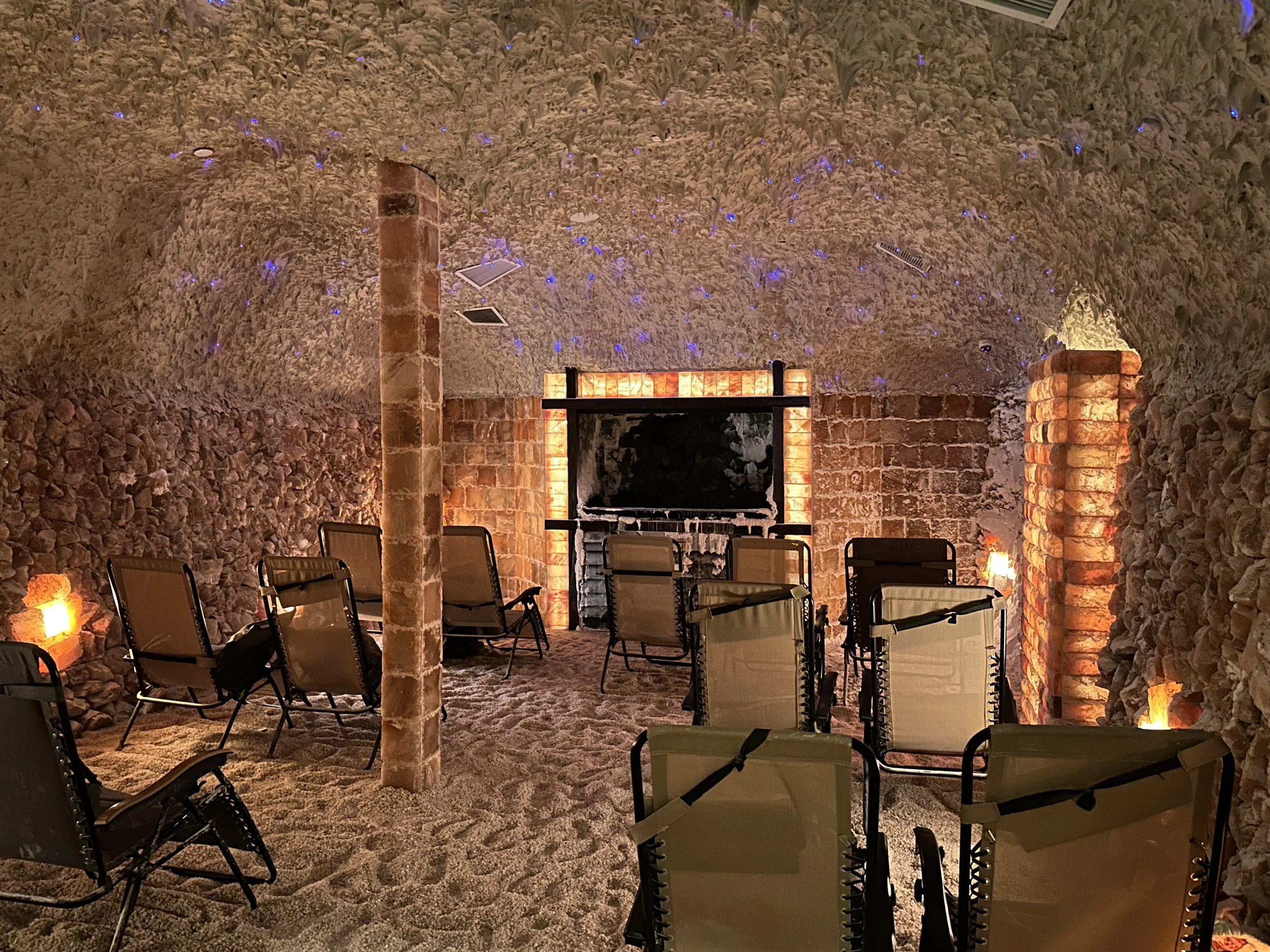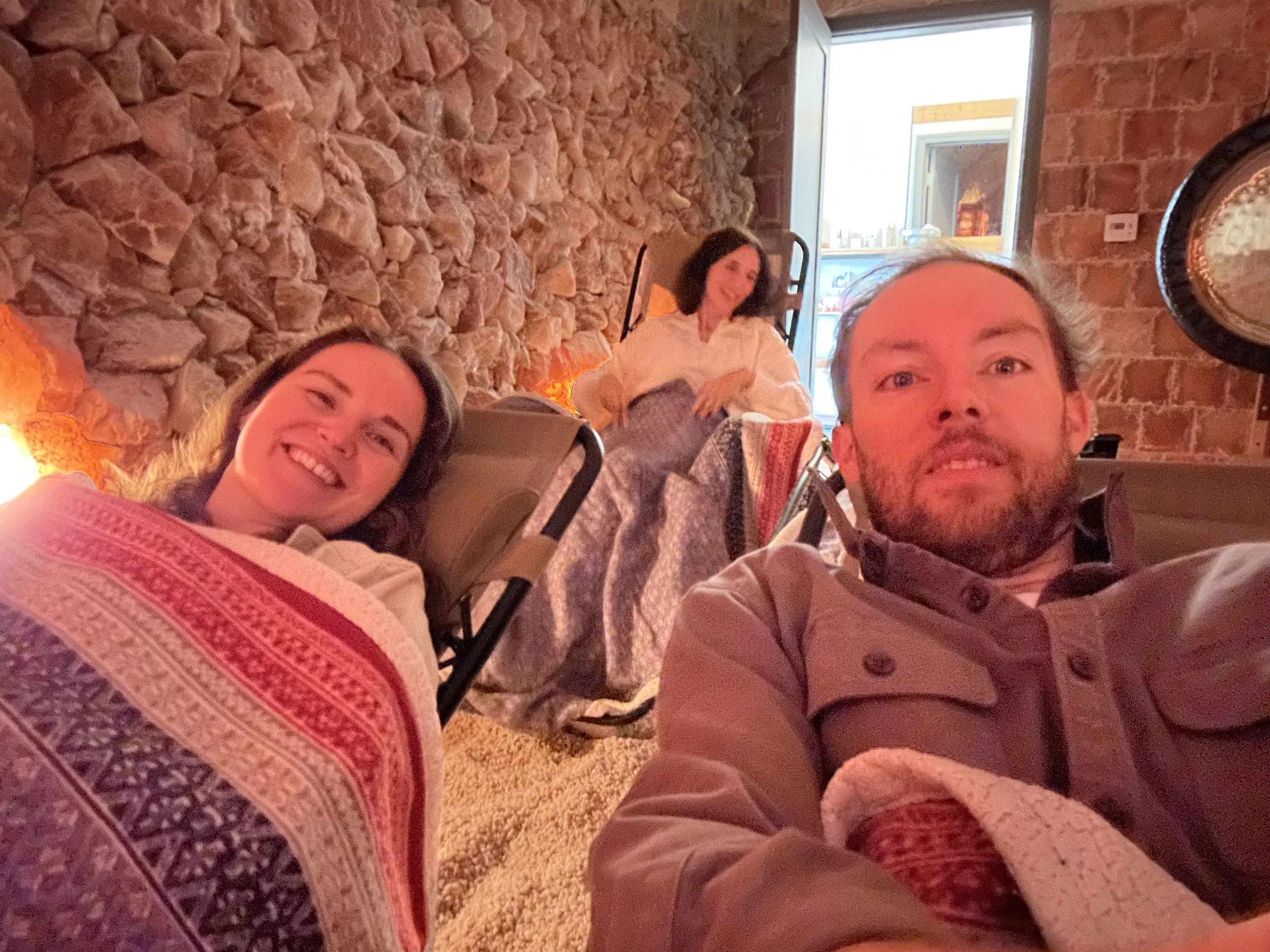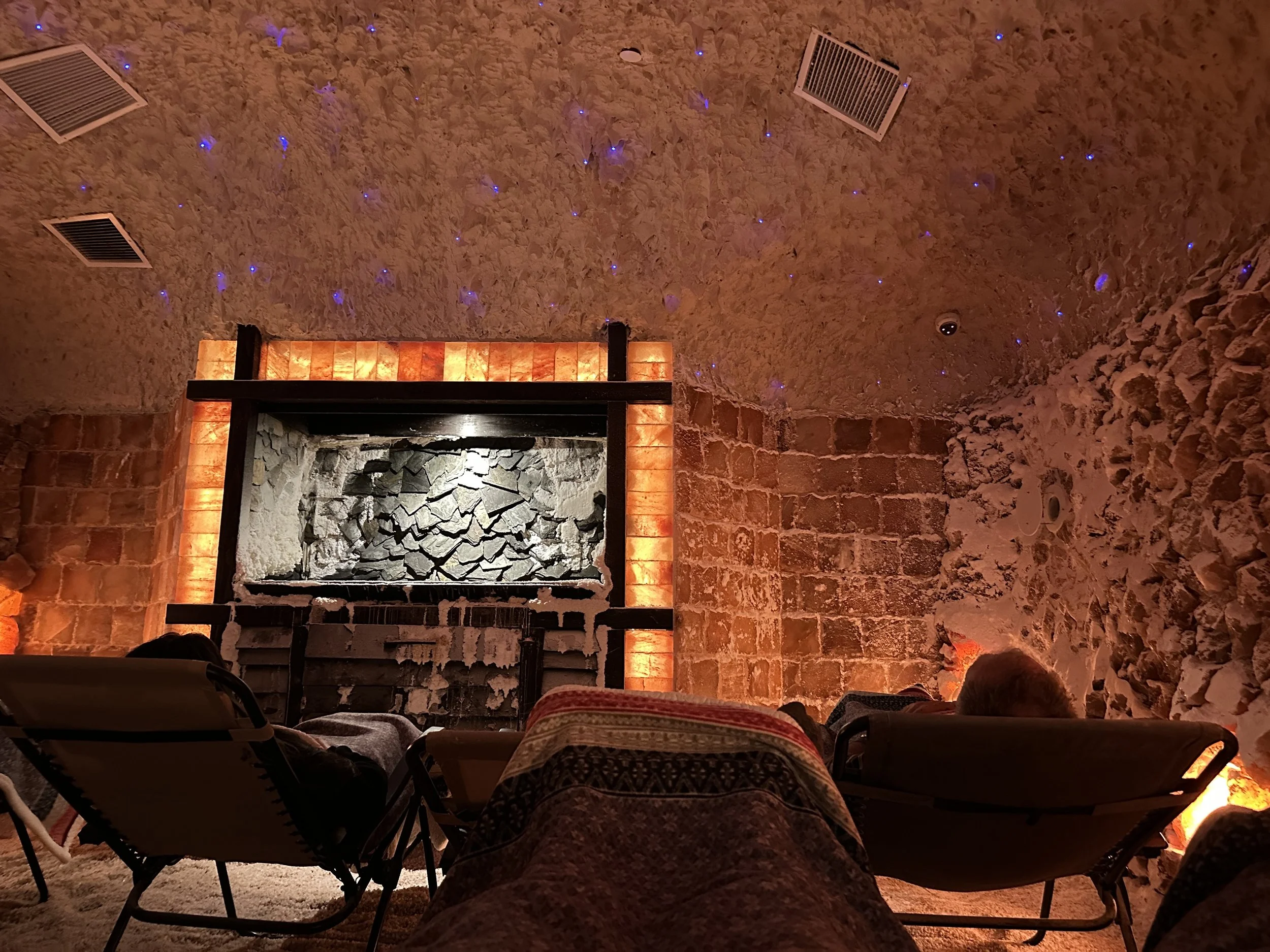Meditation in a Salt Cave
This past weekend, we attended a sound bath in town. But this wasn’t just any sound bath. It was held inside a Himalayan salt cave, where the walls glowed with a soft coral light and the air itself carried the healing touch of salt.
From the moment I settled into the reclining chair, comfort wrapped around me. A halotherapy machine gently filled the cave with microscopic salt particles, said to cleanse the lungs and restore balance. The room glistened, like a starry night, and the atmosphere seemed to breathe along with us.
The Power of Sound and Salt
Sound baths alone can be deeply restorative. Bowls, gongs, and chimes create vibrations that settle into the body like ripples in water. But paired with the salt cave, the experience became something more.
The walls, built of Himalayan crystal, seemed to hold the resonance of each note. As the sound filled the space, the air itself felt charged. Mineral, grounded, elemental. I could feel layers of tension dropping away, the body softening as the vibrations moved through, the mind following with ease into meditation.
It was one of the deepest meditations I’ve entered, not because of effort, but because the environment itself carried me there.
Why Environment Matters
Meditation often teaches us that presence can be found anywhere: sitting on a cushion, walking through a canyon, or even standing in line at the grocery store. And this is true. But environment also matters.
Just as a forest can invite stillness, or the ocean can draw us into vastness, a salt cave offers its own form of support. The air nourishes the body. The glowing walls soften the senses. The sound reverberates not only around us but within us.
When the body feels held, the mind loosens its grip. And when the mind softens, presence comes more easily.
Bringing the Lesson Home
Most of us don’t have salt caves in our backyards, and we don’t need them. What matters is recognizing how much environment shapes practice, and then learning how to create those conditions in daily life.
Maybe it’s dimming the lights before meditation. Maybe it’s adding the scent of cedar, sage, or lavender to the room. Maybe it’s wrapping yourself in a blanket that makes you feel safe, or stepping outside to listen to the wind.
Meditation doesn’t need perfection, but it does thrive when the body feels comfortable, the senses soothed, and the space treated with reverence.
For more reflections on creating supportive environments for mindfulness, explore The Journey Through Meditation ebook — your guide to weaving nature-inspired meditation into daily life. Grab your copy here.



